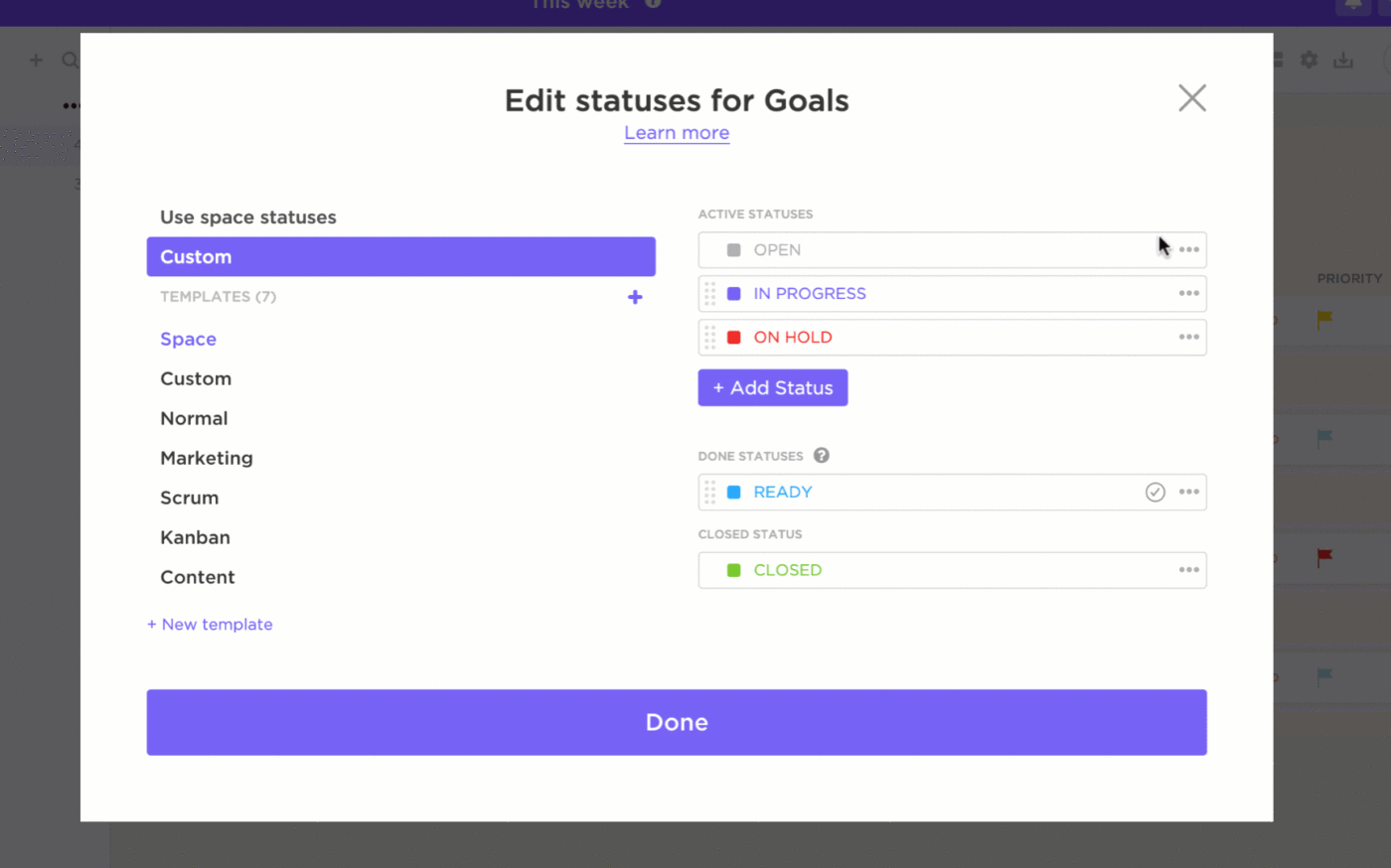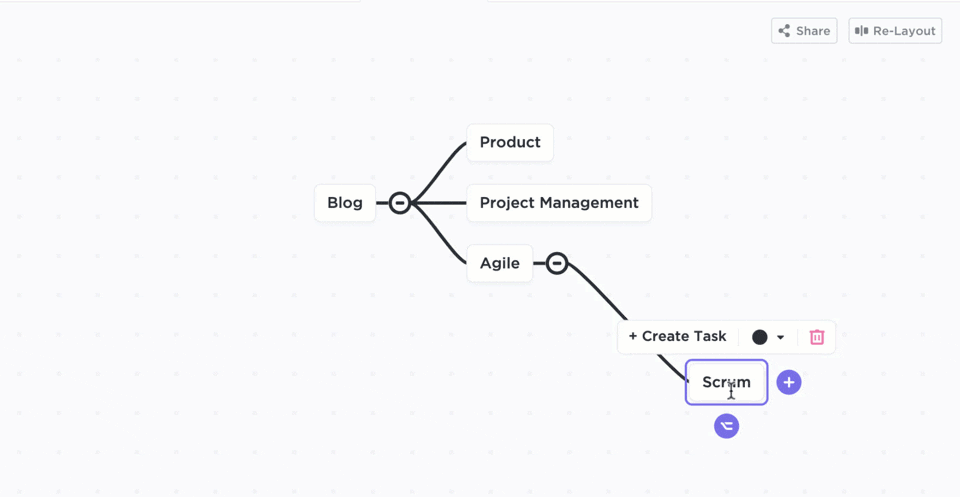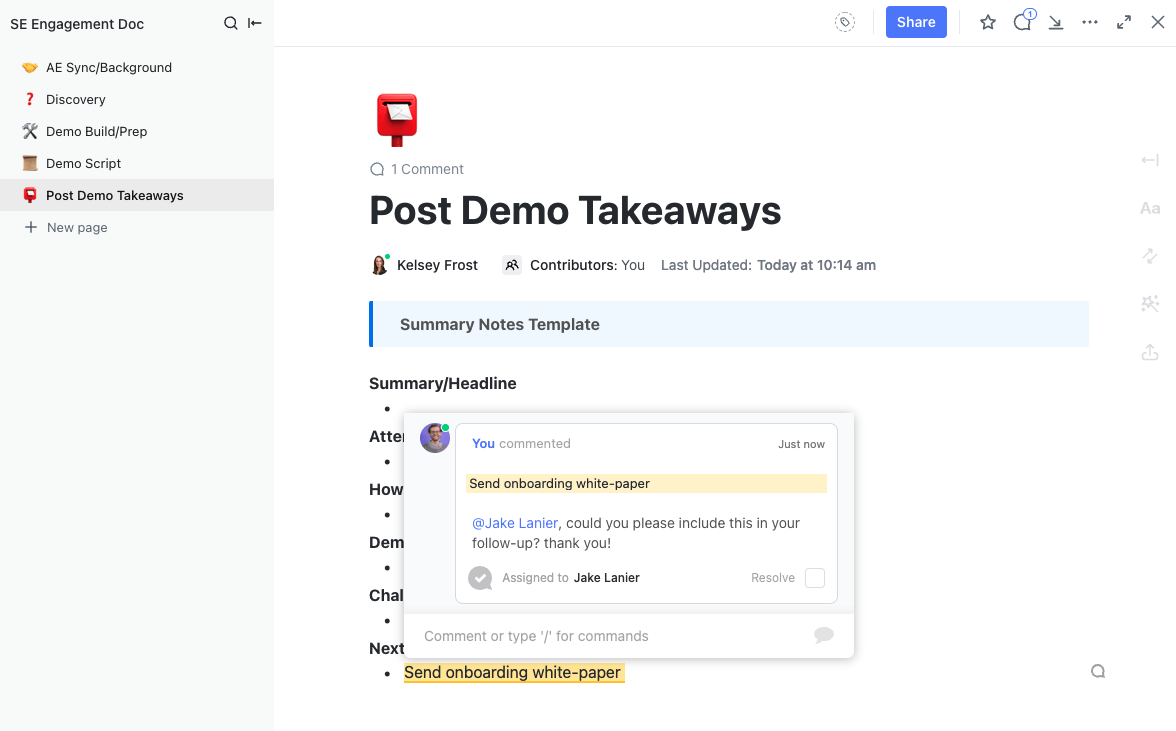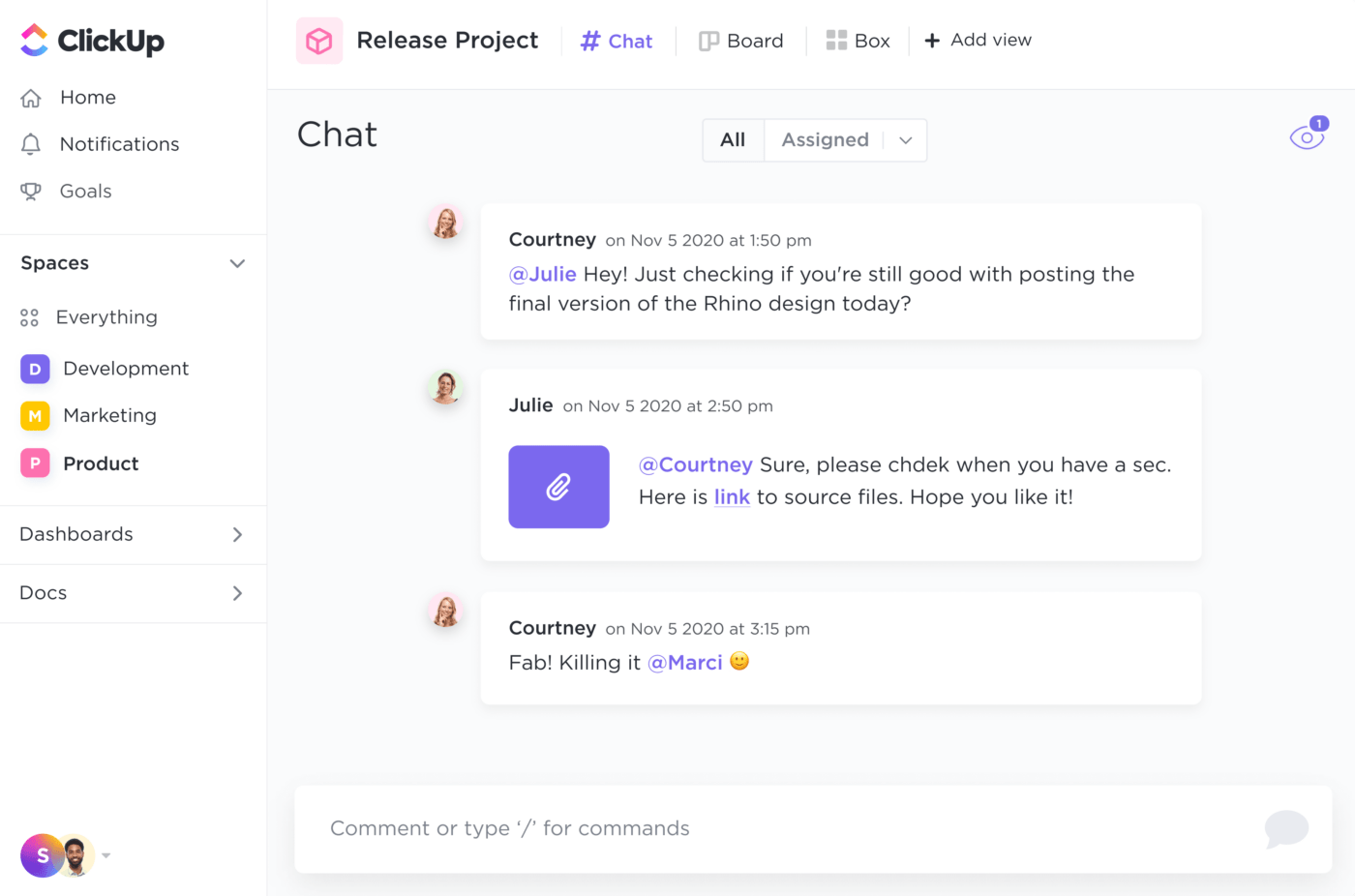How to Improve Interdepartmental Communication

Sorry, there were no results found for “”
Sorry, there were no results found for “”
Sorry, there were no results found for “”
Interdepartmental communication is like a multi-faceted gemstone.
Each facet reflects light differently, yet it’s part of the same gem. Similarly, every department in an organization employs a unique collaborative communication framework driven by different goals, roles, and objectives.
Interdepartmental communication can be defined as the flow of information, data, and messages among various departments, units, or teams, facilitating the coordination of tasks, projects, and organizational objectives.
Interdepartmental communication includes five core elements:
Interdepartmental communication is crucial to keeping an organization running smoothly. This is because:
That said, how often do you get the chance to reflect on the true state of your interdepartmental communications? Are your teams genuinely collaborating, or are they operating in silos, hindered by miscommunication, information leakage, and misunderstanding?
And if you’re eager to learn how to improve interdepartmental communication and initiate centralized communication, what should you do?
Fret not—this blog post explores ten actionable tips to improve interdepartmental communication and ensure various departments talk to each other, not at each other.
Fret not—this blog post explores ten actionable tips to ensure various departments work well together. We’ll also discuss how a project management tool like ClickUp can help with effective interdepartmental communication.
Let’s get started.
As with most organizational initiatives, improving how internal communication between multiple departments starts with understanding where the gaps lie and why interdepartmental communication matters.
Here’s what you should look out for:
The key to better interdepartmental communication is to speak to each department involved.
Consider using anonymous surveys and feedback forms to gather candid insights from everyone. Track communication patterns, such as the frequency and response times of emails or messages exchanged and even the discussion points at cross-departmental meetings.
This will help you understand employee perceptions and highlight specific pain points in interdepartmental communication.
Once you have all the key points, host a joint meeting to discuss the patterns and develop a structure for your communication going forward. It is crucial to take input from all departments and work towards this collaboratively.
Using the ClickUp Employee Communication Template ensures your message is communicated accurately and your employees stay informed. The template comes with:
Much of the time, poor interdepartmental communication is the result of not having common goals. For example, the marketing department may focus on generating leads and the sales department may prioritize conversion and revenue. However, if they were to take a collaborative approach to goal-setting, it would be in the interest of both departments to stay in the loop and help each other.
For instance, the DevOps and customer service teams might ordinarily work independently. But if you were to set a common goal—such as resolving a specific target number of customer tickets related to app performance—they could better assist each other.
The customer service team can provide prompt customer updates, while the DevOps team can prioritize ticket resolution. You can use ClickUp’s Communication Plan Template to plan your shared goals and organize information in one centralized document.
The template comes pre-built with plenty of options for you to:
Additionally, it’s best to use a handy feature like ClickUp Custom Task Statuses to reduce the need for constant check-ins and keep everyone from different departments in the loop. This helps multiple departments understand the progress of tasks and dependencies without having to reach out to people from other departments.

In the example above, the DevOps team can add different stages to the tasks, such as ‘in progress’ or ‘on hold’, or just use simple checklists to show when tasks are ‘done’ or ‘not done.’ This way, your customer service reps can offer correct and real-time updates to customers accordingly.
When coordinating interdepartmental communication, it’s important to watch out for situations that lead to unhealthy competition or conflict between cross-functional teams rather than active collaboration. Have the buy-in of all the department heads so departments communicate smoothly and effectively.
They should work together to actively support shared goals and maintain healthy relations with other departments while advocating for their department’s needs.
For more streamlined interdepartmental communication, try holding monthly cross-departmental meetings or roundtables between the sales team, product team, and customer success team where departmental heads present their team’s achievements, challenges, and upcoming projects.
Encourage everyone to drop in for team-building activities and formal chats and be open to feedback or requests for assistance. This can help establish a neutral liaison between departments to bridge horizontal communication gaps or mediate any possible arguments. ClickUp simplifies this process greatly.
Our communication with other teams is much stronger. Project and task management is incredible on this platform. All departments in the company are thankful that we pushed for it, and that includes freelancers and contractors who now have full visibility into their expectations and can update easily.
The better your departments get to know each other, the more likely they can collaborate on common goals. Investing in activities encouraging team bonding and camaraderie is always helpful.
You could take the departments out for bowling night or organize a curated company offsite event with team-building activities that involve working and strategizing together.
For example, organize a 24-hour hackathon where mixed teams develop solutions for a company-wide problem to foster collaboration and encourage interdepartmental communication.
Even if you are a remote team, you can host virtual events like yoga classes or game nights. You can top that with a gift card so everyone orders dinner on the house and enjoys it as part of the virtual retreat.
In addition, facilitate at least one weekly meeting between your departments so that they develop a rhythm of collaboration.
Allow them to visually map out processes, add notes, and capture their collective creativity using ClickUp Whiteboards.
With real-time visibility of who’s viewing and contributing to the Whiteboard, individual departments can collaborate seamlessly, avoiding overlap and confusion. Whether sprint planning, developing marketing strategies, or optimizing teamwork, ClickUp is truly one of the best workplace communication tools to improve interdepartmental communication.

💡Pro Tip: ClickUp Mind Maps is an effective feature for organizing brainstorming sessions in a clear, structured way that boosts interdepartmental collaboration. Departments can create free-form Mind Maps in Blank Mode and convert them into tasks. They can view and rearrange the task structure for a particular List in Tasks Mode.

Poor interdepartmental communication sometimes results when one department feels the other gets the latest updates before they do. This can lead to resentment and further deterioration of interdepartmental communication.
This can be easily fixed by posting company updates on a common company portal or a shared digital bulletin board so that all employees have access simultaneously (rather than email threads, where the chances of names getting left out are higher) and are on the same page at all times.
For example, you can use ClickUp Docs to create a central repository for company knowledge, project plans, meeting notes, etc.
With real-time editing and commenting features, employees can also collaborate on documents to update them on project progress, policy changes, and upcoming events.

Use ClickUp Assign Comments within Docs to allow for asynchronous feedback and discussions. You can easily resolve or re-assign comments directly in the comment section.

The ClickUp Internal Communications Template is a fantastic way to announce events or internal updates. Whether it’s an all-hands meeting or individual chats, you can use the template to:
💡Pro Tip: Whenever interdepartmental meetings occur, use ClickUp Brain to create reports and meeting notes. ClickUp Brain can summarize the discussion and lay out estimated next steps. If specific updates about a common project need to be shared, make sure both departments get access to the same details and context at the same time.
Technology certainly isn’t a substitute for strong human relationships, but it’s a great enabler. Use technology to help increase employee engagement and facilitate smoother communication between departments.
Move beyond traditional email threads for interdepartmental collaboration and invest in real-time communication platforms to share work updates, fun conversations, one-on-one feedback from bosses, and more. Reap the benefits of cross-functional collaboration with tools like ClickUp.
For example, with ClickUp Clips, product teams can create and share screen recordings to demonstrate processes, give suggestions, or share updates with the sales team and other departments. This visual communication tool helps ensure that all employees understand your messages clearly and easily.
ClickUp Chat Views on the other hand, boost all-around employee communication and engagement. And since it lives on the same platform, you can manage projects and chat with colleagues all in one place.

This feature provides a centralized conversation space for different departments, reducing the need for scattered emails and messages. It keeps all communication within the context of your tasks and keeps your departments interconnected.
💡 Pro Tip: Regularly review and update your technology stack to ensure it meets your organization’s evolving needs. Conduct training sessions to help employees make the most of the available tools.
Smooth diagonal communication is essential for aligning cross-functional teams.
However, improving interdepartmental communication will have its roadblocks. It helps to offer a judgment-free platform so employees can share their thoughts and problems, whether about specific situations or the team as a whole.
To address this, deploy these communication plan templates and outline the frequency, methods, and channels for feedback. This will ensure a mechanism where everyone knows when and how they’ll receive and provide feedback.
You can also create online feedback forms that your coworkers can fill out anonymously.
Periodically, host review meetings with departmental heads to discuss critical points received through various channels and develop solutions in a moderated setting. With time, you will start noticing that departments feel acknowledged and heard.
Also Read: 10 Best Team Communication Apps in 2024
Conflict between departments can occur for several reasons—whatever they might be, you need to step in and resolve them as quickly as possible. The first step is to minimize the risk of conflict by being extremely clear about individual expectations.
If conflicts occur, give each party the space to share their side and facilitate an agreement. Set clear timelines for each stage of this process.
The goal of conflict resolution shouldn’t just be to smooth things over. If concrete improvements can be made, such as reassigning someone to a skill area they prefer or readjusting deliverables to be more ‘fair’, don’t hesitate to suggest them. Of course, the concerned employee’s manager and department head will have the final say.
At the same time, provide departmental heads with the resources and training they need to recognize areas of potential conflict and resolve them independently. For example, you can offer workshops on active listening, mediation, and negotiation techniques.
💡Pro Tip: Establish clear protocols for escalating conflicts, such as having a neutral third party mediate disputes or setting up a formal grievance process. Review and refresh these protocols annually to ensure they remain practical and relevant and to avoid a toxic work culture.
One of the best ways to build camaraderie is by celebrating a shared accomplishment. And when it’s the result of great interdepartmental communication, it’s all the more laudable.
Whether it’s a project goal successfully met or communication strategies adopted smoothly, have a system that appreciates each department’s work for the organization and each other.
Some tips to celebrate employee achievements:
At the end of the day, employees communicate better when they feel confident that their voices are heard, and mistakes are stepping stones to improvement. Encouraging effective interdepartmental communication is a chance to create an empathy-first company culture.
You can start by setting an example where the leadership team is candid about sharing feedback and working on mistakes. Promote storytelling sessions where senior management shares their personal experiences of empathy-driven collaboration.
The more your employees see examples of different departments working through complex situations, the more likely they are to mirror that behavior. This can also build a more supportive and understanding work environment.
It’s human nature to look out for one’s interests and the interests of one’s team, which is why interdepartmental communication can be hard to optimize.
With conscious effort, however, you can help your departments see what they have in common and motivate them to work collaboratively. Start by setting goals and enabling conversations through regular meetings to improve interdepartmental communications.
The wins may be small at first, but with sincere effort, they’ll keep coming. And over time, you can benefit from departments that trust each other and amplify each other’s growth in the pursuit of shared success.
Lastly, interdepartmental communication should be supplemented with the right tools and feedback opportunities. ClickUp can streamline operations and eliminate communication barriers.
As an all-in-one project management platform, it centralizes your work data, projects, discussions, feedback, and progress, ensuring transparency and minimizing miscommunication at all levels.
No more working in silos with ClickUp.
Sign up for ClickUp for free and get ready to experience the difference that effective communication can make in your organization.
© 2026 ClickUp